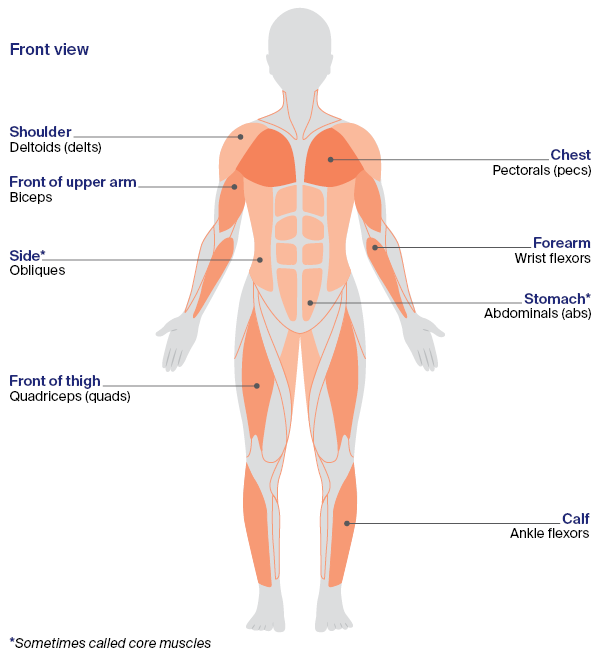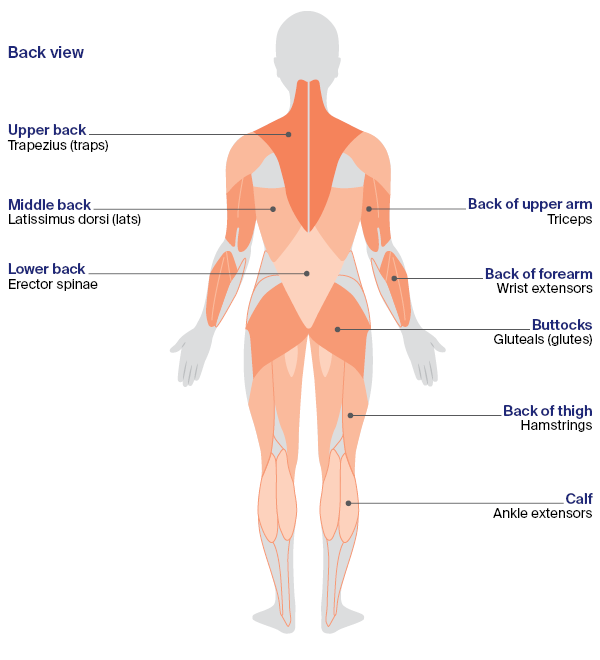Before exercising, it is important to talk with your doctors about any precautions you should take.
Aim to be as active as your abilities allow and adapt your exercise program to suit your type and stage of cancer. Some days may be harder than others, but even a few minutes of light exercise is better than no exercise at all.
Exercise professionals
People affected by cancer should see an exercise physiologist or a physiotherapist. Personal trainers and exercise scientists are not trained to work with people who have major health issues.
Find an exercise professional
There may be an exercise physiologist or a physiotherapist at your cancer treatment centre who you can see. If not, your general practitioner (GP) can refer you to an exercise physiologist or a physiotherapist as part of a chronic disease management plan (which means you may be eligible for a Medicare rebate for up to five visits per calendar year).
In most cases, you will still have to pay to see an exercise professional. Check with your health insurer if they cover seeing an exercise physiologist or a physiotherapist. The Department of Veterans’ Affairs may also be able to financially assist some people.
When you look for an exercise professional, ask to see someone with experience working with people who have cancer. Search for an accredited exercise physiologist (AEP) by name, location or specialty (i.e. cancer) at Exercise & Sports Science Australia’s website and search for a physiotherapist on the Australian Physiotherapy Association’s website. To find a group exercise program, ask at your cancer centre, ask your GP for a referral or call Cancer Council 13 11 20.
Exercise physiologists
Also called Accredited Exercise Physiologists (AEPs), these allied health professionals have completed at least a four-year university degree. They use exercise as medicine to help disease management and wellbeing.
Physiotherapists
These allied health professionals have completed at least a four-year university degree. They focus on physical rehabilitation and prevention and treatment of injuries using a variety of techniques, including exercise, massage and joint manipulation.
Starting an exercise program
Find an exercise program that you enjoy, and that matches your current fitness level. Ask your health professional what activity is best for you and your ability.
Exercise at home and outdoors
Home-based exercise can be easiest to start with. You can try some strength or resistance training exercises at home. Being active outdoors is an excellent way to include physical activity and exercise in your daily routine. You can try aerobic activities such as walking, cycling or swimming.
Join a group exercise program
Many gyms and fitness centres run group exercise programs. When joining, let your gym know that you have cancer, and ask if they have someone who can help to ensure that the exercise program is right for you. Ideally, an exercise physiologist or physiotherapist will assess your health and fitness and tailor a program to your needs. Your cancer centre may offer classes designed for people with cancer.
Do incidental activity
Move more throughout the day. You could walk or ride to the shop or hospital, or take the stairs. The important thing is to try and be active most days of the week.
Choose what to wear
You don’t need to buy expensive equipment or special clothing to do exercise, but the correct shoes are needed for walking or jogging. Visit a reputable shoe shop for suggestions to suit you and your health concerns. You may like loose, comfortable clothes, such as shorts and a T-shirt, when exercising. Or you may find close-fitting or supportive tights and a top are best for some exercise.
Find equipment
Activity monitors, hand weights, heart rate monitors and home-gym systems can be useful but aren’t necessary. You can add exercise equipment into your program at little to no expense. For example, a step is a great aerobic and resistance training device. A backpack filled with a bag of sand makes for a good piece of resistance training equipment.
Mix it up
Try to include aerobic and cardio exercises as well as strength and resistance training in your weekly exercise program. Doing a combination of different types of exercise helps to improve more areas of your health and fitness.
Planning an exercise session
There are 3 general parts to an exercise session:
- Warm-up: The aim of a warm-up is to increase blood flow to warm your muscles or gradually raise your heart and breathing rates. This prepares your body for further activity without a sudden elevation. A warm-up can include 5–10 minutes of low intensity aerobic and cardio exercise and light stretching. Walking or stepping up and down on a stair are good warm-ups. If approved by your doctor or exercise professional, you can use light weights to warm up before strength training.
- Training: This is the part of an exercise session when the work is done. It could include activities from one or more types of exercises, including aerobic exercise, strength-training exercises, flexibility exercises and pelvic floor exercises.
- Cool-down: The cool-down allows your heart rate and blood pressure to gently return to normal. It also helps your body and muscles recover and reduces soreness after exercise. After aerobic or cardio exercise, cool down with 5–10 minutes of relaxed, low intensity activity such as slow walking or cycling. After strength or resistance training, you can cool down with light stretching.
Ways to stay motivated
- Exercise diary: Record every day’s physical activity in a paper diary or calendar. List the activity type, intensity and duration.
- Online: Websites such as myfitnesspal.com allow you to record your food intake and exercise sessions for free.
- Apps: Free smartphone apps such as Runkeeper, STRAVA or MyFitnessPal track your movement if you wear a smartwatch or keep your phone on you while you are exercising, or you can record your activity later.
- Gadgets: Also called wearables, devices such as those from Fitbit and Jawbone are worn like a watch. They can track your activity and transfer the data to your smartphone or computer.
- Bad weather options: A combination of indoor and outdoor exercise options will mean you can remain consistent despite the weather.
- Exercise buddies: Exercise with family or friends to keep each other motivated. You can even share an online class together.
Muscle groups
These diagrams show the major muscle groups of the human body. Aerobic exercise focuses on improving your heart and lung fitness, but also works many of your body’s muscles. Strength-training and flexibility exercises both focus on the muscles, with individual exercises usually targeting specific muscle groups.
The exercises in this section cover a range of muscle groups. An exercise professional can help you plan a weekly program that covers all the muscle groups and concentrates on any areas that need particular attention.


Exercise for People Living with Cancer
Download our Exercise for People Living with Cancer booklet to learn more and find support.
Download now Order for free
Expert content reviewers:
Kirsten Adlard, Accredited Exercise Physiologist, The University of Queensland, QLD; Dr Diana Adams, Medical Oncologist, Macarthur Cancer Therapy Centre, NSW; Grace Butson, Senior Physiotherapist, Peter MacCallum Cancer Centre, VIC; Kate Cox, 13 11 20 Consultant, Cancer Council SA; Wai Yin Chung, Consumer; Thomas Harris, Men’s Health Physiotherapist, QLD; Clare Hughes, Chair of Cancer Council’s Nutrition, Alcohol and Physical Activity Committee; Jen McKenzie, Level 1 Lymphoedema Physiotherapist, ESSA Accredited Exercise Physiologist, The McKenzie Clinic, QLD; Claudia Marck, Consumer; Dr David Mizrahi, Accredited Exercise Physiologist and Research Fellow, The Daffodil Centre at Cancer Council NSW and The University of Sydney, NSW; Prof Rob Newton, Professor of Exercise Medicine, Exercise Medicine Research Institute, Edith Cowan University, WA; Jason Sonneman, Consumer.
Page last updated:
The information on this webpage was adapted from Exercise for People Living with Cancer (2023 edition). This webpage was last updated in September 2023.